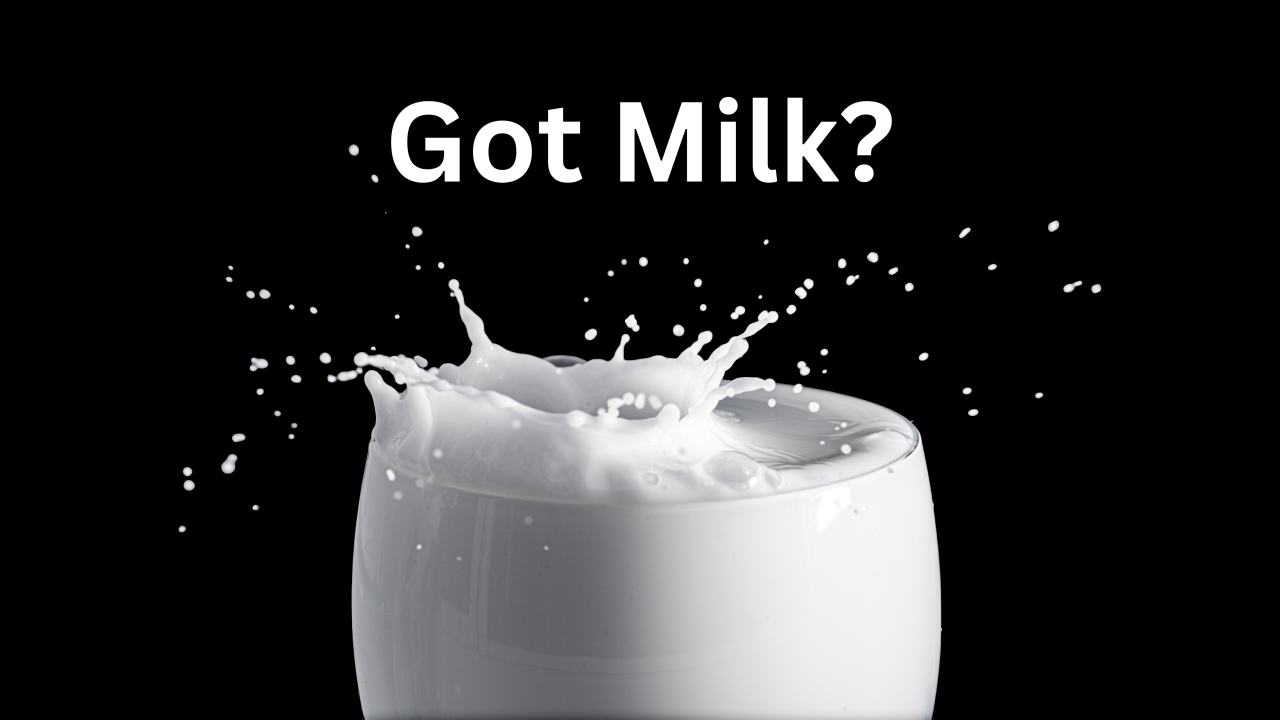
How "GOT MILK' Reintroduced Milk to the Public?
Few advertisements in advertising history can compare to "Got Milk?" in terms of iconic status and effect. This programme, which was started in 1993 by the California Milk Processor Board (CMPB), changed the face of milk marketing and made it more than just a boring food item; it became a cultural phenomenon.
This article will explore the tactics used by "Got Milk?" to achieve its success and its part in bringing milk back into the public's awareness
Understanding the Decline

In the 1980s, the milk industry’s “Milk Does a Body Good” campaign emphasized the health benefits of milk, focusing on its calcium and protein content. However, this approach was not compelling enough to maintain high consumption rates.
In the early 1990s, milk was facing an identity crisis. Consumption was declining rapidly as beverages like sodas, juices and bottled waters gained ground. The dairy industry needed a major shake-up to remind Americans about the importance and benefits of milk
The Birth of "Got Milk?"

The “Got Milk?” campaign, created by the ad agency Goodby Silverstein & Partners, took a different approach. Instead of highlighting what milk could do for consumers, it focused on the drawbacks of NOT having milk. The campaign used humor and relatable situations, like struggling to eat a dry peanut butter sandwich or cereal without milk, to emphasize the importance of having milk in the household.
The Power of the Question
At its core, "Got Milk?" was built on the power of a single question. By focusing on the absence of milk at critical moments, such as when enjoying a cookie or eating cereal, the campaign tapped into a universal experience: the frustration of not having milk when it's needed most.
This approach created a sense of urgency and relevance, making the message resonate with audiences across demographics. The simple tagline accompanied photos of celebrities with "milk moustaches", using humor and pop culture relevance to generate buzz around milk.
The Secret to the Campaign's Success

Several factors contributed to the massive success and longevity of the "GOT MILK?" campaign:
Use of Celebrity Endorsements: From pop stars like Britney Spears to movie icons like the Milk Mustache'd men, the campaign brilliantly leveraged the power of celebrity to appeal to consumers across demographics. Over 300 celebrities participated in the 20-year run.
Consistent, Straightforward Messaging: The simple "GOT MILK?" question remained front and center on every ad, creating an easily recognizable brand that stuck in people's minds.
Creative, Humorous Executions: The milk mustache visual was an instant attention grabber, and the unexpected scenarios ("Aaron Burr?" edition) kept the campaign feeling fresh over the years.
Massive Media Exposure: At its peak, the campaign had an ad value of over $328 million per year thanks to generous media exposure and publisher discounts.
Quantifiable Success
The impact of "Got Milk?" on milk consumption and sales was nothing short of remarkable.
According to reports from the CMPB, the campaign led to a significant increase in milk sales in California, with a 7.7% rise in the first year alone.
Nationally, milk sales saw a surge, reversing the previous decline and setting a new trajectory for growth. Beyond sales figures, "Got Milk?" also contributed to shifting perceptions about milk, reinforcing its image as a wholesome and essential part of a healthy diet.
The Legacy and Impact

Originally planned as just a 3-month campaign, "GOT MILK?" ended up running for over 20 years, becoming one of the most famous and successful campaigns in advertising history.
It generated over $23.5 billion in sales for California's dairy farmers and inspired many spin-offs and parodies, cementing milk's place in pop culture along the way. Advertising Age named it one of the best campaigns of the first 50 years of advertising.
A New Spin
“Got Milk?” was retired in 2014, replaced by the “Milk Life” campaign that focused on nutrition. However, the “Got Milk?” campaign made a comeback in 2020, leveraging the resurgence in milk sales during the COVID-19 pandemic with a new spin.
Television and digital ads use user-submitted footage showing regular people—and celebrities like American Olympian Katie Ledecky—creatively using milk.
As part of the promotion, swimmer Ledecky posted a TikTok challenge with the hashtag #GotMilkChallenge. In the video, she swam the length of an Olympic-sized pool while balancing a glass of chocolate milk on her head.
Today’s Milk Market
"Got Milk?" stands as a testament to the power of innovative marketing in reshaping consumer behavior and perceptions. By asking a simple question and leveraging creative storytelling, the campaign succeeded in reintroducing milk to the public consciousness and revitalizing the dairy industry.
As marketers continue to seek ways to connect with audiences in a crowded media landscape, the lessons of "Got Milk?" remain as relevant as ever: sometimes, the most effective messages are the simplest ones.
The milk industry continues to evolve, with new marketing strategies and products designed to appeal to modern consumers. The legacy of the “Got Milk?” campaign remains, serving as a reminder of the power of effective advertising and the enduring place of milk in our lives.